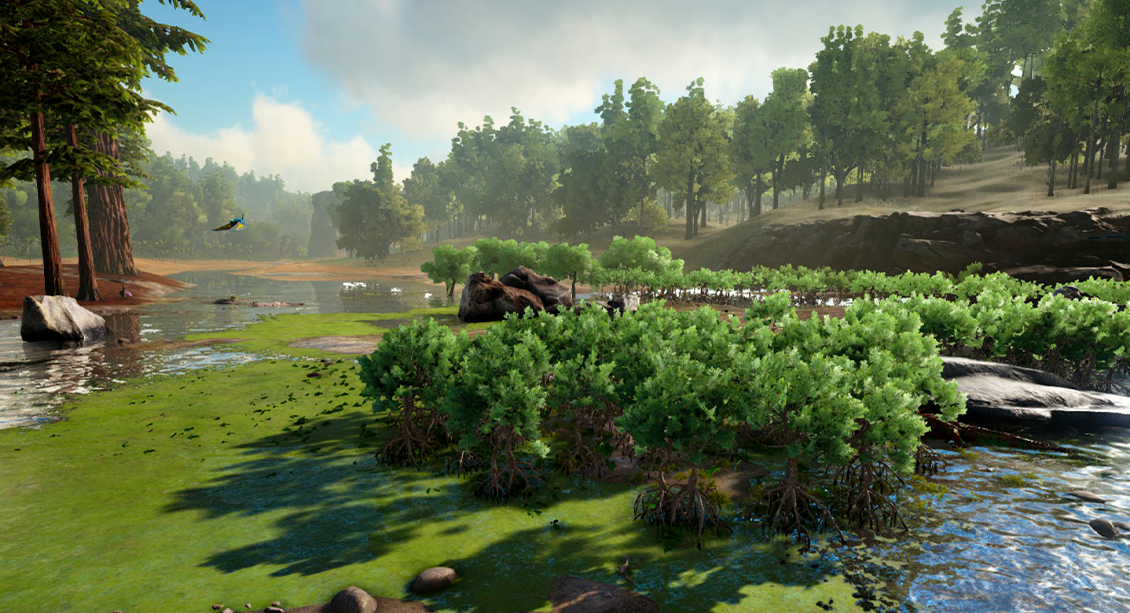How To Get Fiber in ARK

Make Your Own ARK: Survival Evolved Server
Your own ARK: Survival Evolved server is only 5 minutes away!
Start Your ARK: Survival Evolved Server Today!
In the ARK, fiber is a crucial resource: Many game-related objects and structures must be made using Survival Evolved. Understanding the different ways to collect fiber is valuable for both seasoned players and beginners.
We'll discuss how to get fiber in ARK in this article, including how to get it from plants, how to use particular tools, and how to tame animals. But first, check out this awesome ARK server hosting!
The Most Basic Method
Plants can be manually collected in order to be used as fiber in the ARK. Most of the plants that are present throughout the game's environment will produce some fiber when gathered. By approaching plants and hitting the action button, users can gather plants. Each plant yields a different amount of fiber, although players can anticipate gathering one to ten fiber per plant on average.
Hand-picking plants is easy but not the most efficient method, especially when needing a large quantity of fiber. There are various ways you can get additional fiber if you need it.

Metal Sickle: The Most Efficient Tool for Gathering Fiber
The most effective instrument for gathering fiber in ARK is the Metal Sickle, which players may get at level 30. The necessary elements can be used in the Smithy to create the Metal Sickle. Once it is made, players can use it to harvest plant fiber, which produces a lot more fiber than hand gathering.The Metal Sickle is useful because it can harvest numerous plants at once, which makes it perfect for gathering enormous amounts of fiber. If you're serious about efficiently acquiring fiber, it's worth the investment to create the Metal Sickle, even though it uses some resources.

Crafting Tools: The Stone Hatchet and Pickaxe
Players can utilize various tools, such as the Stone Hatchet or Pickaxe, although the Metal Sickle is the most effective for gathering fiber. These implements can also be used to harvest plant fiber since they are primarily intended for gathering wood and stone, respectively.While using a Stone Hatchet or Pickaxe to gather fiber is less efficient than a Metal Sickle, it is still a viable option if a Metal Sickle is not yet available. It is advised to make the Metal Sickle, nevertheless, if you intend to gather a lot of fiber.
Tamed Creatures: The Dire Bear and Other High-Gathering Efficiency Creatures
Using tamed critters with great gathering efficiency is another approach to get fiber. For instance, the Dire Bear can quickly farm enormous quantities of fiber due to its excellent gathering efficiency for the material. Other animals with excellent fiber collection efficiency include the Mammoth.Players must mount a tamed beast and utilize its attack button to attack plants in order to use it to gather fiber. Following that, the creature will gather fiber from the plants, which can be obtained from the creature's stockpile.
Tips for Maximizing Your Fiber Gathering
Here are some pointers for making the most of your fiber harvesting now that you are aware of the many techniques for doing so in ARK:- Seek out regions with a lot of vegetation: In some regions of the game, there are more plants than others, which makes gathering fiber simpler and faster. Swamps and woodlands, for instance, make great places to obtain fiber.
- Employ the Metal Sickle or other tools: The Metal Sickle is the best tool for gathering fiber, as was already indicated. Nevertheless, if a Metal Sickle is not accessible, a pickaxe or stone hatchet can be used as an alternative.
- Take into account taming a Dire Bear or other species with great hunting effectiveness: Gathering fiber can be made much simpler and faster by taming a beast like the Dire Bear. But remember that taming a beast takes time and resources.
- Create a Scythe: In ARK, the Scythe is an additional tool for gathering fiber. It can nonetheless be helpful, especially if you're short on resources, despite having a lesser gathering effectiveness than the Metal Sickle.
- Use a tamed Megatherium: Another monster with a high fiber-gathering efficiency is the Megatherium. Also, they have a special trait that boosts their collecting productivity when they kill insects, which is advantageous if you require both chitin and fiber.

FAQ
Can fiber be obtained from underwater plants or creatures?
No, fiber can only be found in plants that grow on land. Although there are aquatic animals and plants in ARK, none of them produce fiber when harvested. Gamers must only grow plants on land to obtain fiber.
Do certain plants yield more fiber than others?
Although most plants produce some fiber, some produce more than others. The plants that resemble bushes, like ferns and shrubs, are the greatest for producing fiber. The greatest choice for obtaining fiber is from these plants because they frequently produce more fiber than other types.
Can you use Therizinosaurus to collect fiber?
Yes, a tamed animal like the Therizinosaurus can be used to automate the gathering of fiber. Therizinosaurus may be programmed to automatically harvest plants when left in a certain location and has a high efficiency for gathering fiber. Yet, it takes a lot of resources and work to tame a Therizinosaurus.
How much fiber does the Metal Sickle yield per plant?
The type of plant determines how much fiber the Metal Sickle produces per plant. Nonetheless, the Metal Sickle typically provides between 25 to 30 fiber per plant, which is a lot more than what can be collected by hand.
Can fiber be obtained from dead creatures?
Dead animals cannot be used to obtain fiber. While certain creatures leave behind craftable items, fiber is not one of them. Gamers must either gather fiber themselves from plants or use a domesticated creature to do so.
How long does it take to gather a significant amount of fiber using a Metal Sickle?
The number of plants in the region and the player's gathering efficiency determine how long it takes to gather a substantial amount of fiber using a Metal Sickle. Nevertheless, using a Metal Sickle often requires 15 to 20 minutes to collect 1,000 fibres.
Final Thoughts
In summary, fiber is a critical resource in ARK: Survival Evolved, and mastering its efficient acquisition is essential. Various strategies can be employed, such as hand-harvesting plants, using tools, or taming animals that gather fiber.Try out various techniques to determine which suits your playstyle and available resources the best. You may collect all the fiber you require to advance in the game by using the appropriate strategy.
Make Your Own ARK: Survival Evolved Server
Your own ARK: Survival Evolved server is only 5 minutes away!
Start Your ARK: Survival Evolved Server Today!
Copyright 2019-2025 © ScalaCube - All Rights Reserved.